Seventy years ago, LIFE put the Alcort company on the map when the magazine featured the Sailfish sailboat in an article titled "World's Wettest, Sportiest Boat," published in the August 15, 1949 issue. Two years earlier, Alcort had expanded their market from iceboats to the little Sailfish, a lateen-rigged wooden hull that measured just under 12′. The boat was easy to handle, affordable, and offered a sporty, splashy ride to America’s post-war market of recreational sailors.In 1946, Alex Bryan and Cortlandt Heyniger had combined bits of their first names to create Alcort, Inc., and the first sailboat that they designed, in 1947, was the 11′ 7″ Sailfish, built in Waterbury, Connecticut. The Sailfish had a beam of 31-1/2″, a crew capacity of 300 lbs, and weighed 82 lbs. The volume of air enclosed by the hull and deck made the boat virtually unsinkable. A 65-square-foot lateen sail provided ample power. The authors' Super Sailfish, ZSA ZSA, is their restoration of a wooden boat built in the 1950s. Here, the varnished daggerboard rests just aft of its slot.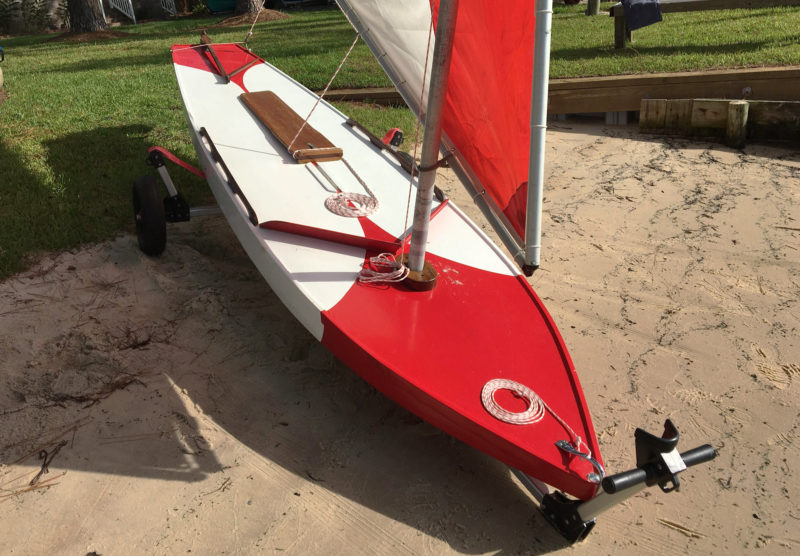 Photographs by the authors
Photographs by the authors
Join The Conversation
We welcome your comments about this article. To include a photo with your remarks, click Choose File below the Comment box.

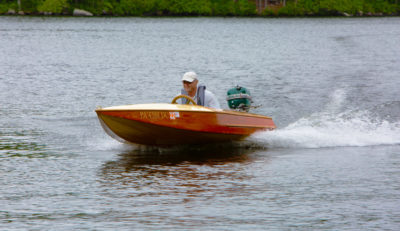
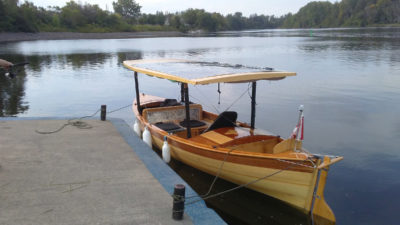
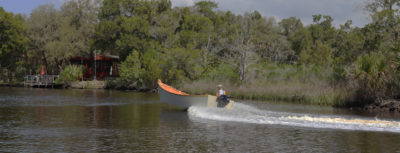
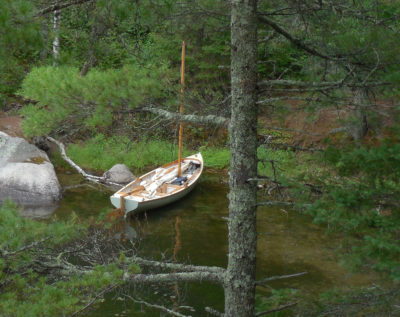

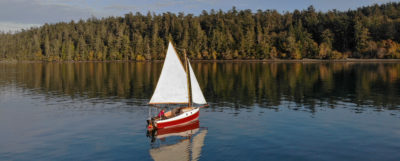




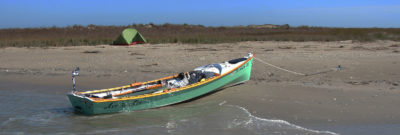
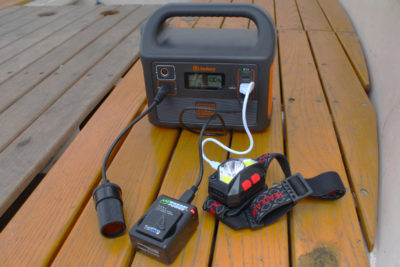

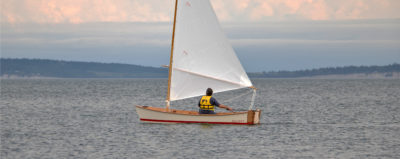
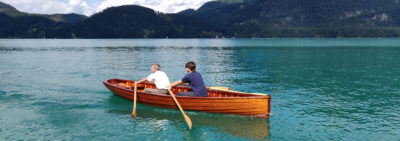
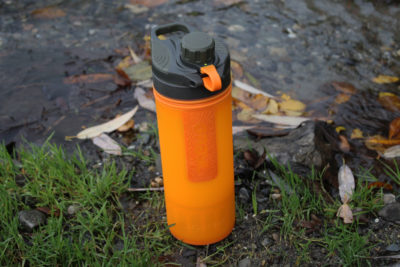
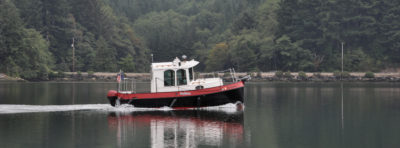
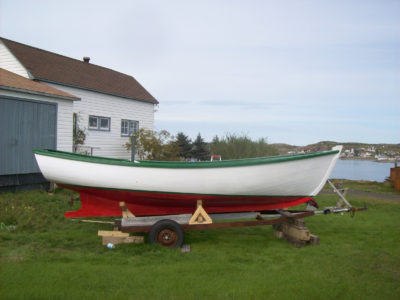
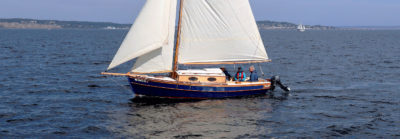


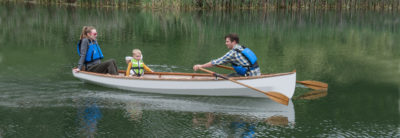
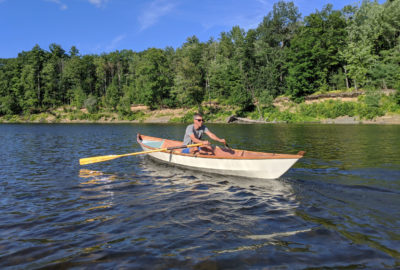

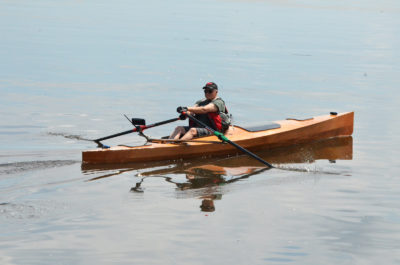
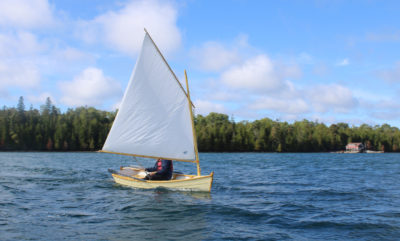
Let’s build one FOUR times original size! What a hoot! May have to reduce sail area proportionally….just imagine the fun! Or take one to J boat size! Wow!
Great article. Love the video to see how it sailed. But most of all, really enjoyed reading the history behind the ubiquitous Sunfish, which I have sailed often over the years. The wooden Sailfish versions were before my time. Thank you.
We have a mini sunfish that we bought used in the 1980’s. It is a sturdy craft, and we have
sailed it a lot over the years down here in the Florida Panhandle. I repainted it with Interlux fifteen years ago, and it still looks good. It seems to be indestructible.
I am thinking of making a longer dagger board for her, after reading the excellent article in
Small Boats. Anybody know where I can get a new handle?
It’s interesting how things come around.
Al and Cort first built the Sailfish as a paddleboard to go after swimmers as they were trying for a Red Cross contract. An enlarged surfboard if you will. Too expensive for the Red Cross. So what to do with it. Besides iceboats, Al and Cort were open canoe sailors, and presumably had some kit kicking around. Doesn’t take much to put the two together. The LIFE article came about by some kind of friend-of-a-friend-girlfriend relationship. Don’t remember the details. In today’s saturated world it is difficult to think of a media splash that would have the same impact as a multiple page spread in LIFE. Not so incidentally Al and Cort created the first fully self-rescuable sailing craft.
The Sunfish apparently happened when either Al’s or Cort’s wife became pregnant and found the Sailfish hard to sail.
And it is interesting to see that the Sailfish does work pretty well as a paddleboard!
I got mine as a 13th-birthday present from my grandmother, back in 1967, and sailed her on Cranberry Lake in NW New Jersey. My evil trick was to grab a gust, haul in, then climb over the side to stand on the daggerboard, dumping my crew in the middle of the lake. I could right her and be off again before they knew what was happening.
Nice useful information here. I just purchased an early ’70s MK II. Ready to start cleaning it up. Question: there is a small (3/8″ – 1/2″) hole located next to the bow handle on the deck. Any idea what it’s for? A drain of some type maybe? Any help would be appreciated.
The Alcort Sailfish and Sunfish featured in your current issue are wonderful boats! The underlying philosophy of fun, simplicity and low cost, coupled with ease of transport and storage, would have given access to sailing to many, many people who otherwise would never have had an experience of the sport.
You might be interested to know that the influence of these boats spread far and wide. In 1956 in Melbourne, Australia, two friends, Bruce Scott and Jack Carroll, were both keen dinghy racers and came across some articles in North American yachting magazines that featured the Alcort Sailfish and Sunfish. The articles provoked their immediate interest – no crew worries, just rig ’em and race ’em. Those articles were the stimulus for their design of a sailboard that could be easily home-built and which was suitable for the notoriously challenging conditions of Port Phillip Bay. This became the Australian Sailfish.

The Australian Sailfish very quickly became popular at clubs on Port Phillip, and then spread rapidly through the eastern states of Australia and onto Papua New Guinea. An Australian Sailfish Class Owners Association was formed in 1961. National championships commenced in 1968 and were held annually thereafter.
The Alcort Sailfish and Sunfish were undoubtedly the stimulus for this Australian boat. The Australian boat is of similar overall dimensions to the Alcort Sailfish, and has the same sail area. It is a distinctly different craft to the North American boat, however, in that it is considerably lighter (minimum hull weight 63 lbs), has a stayed, fully-battened Bermudan rig, and, importantly, is a scow. These features probably allow it to point higher and plane earlier and faster than the Alcort boat (but at the cost of some of the simplicity of the original design).

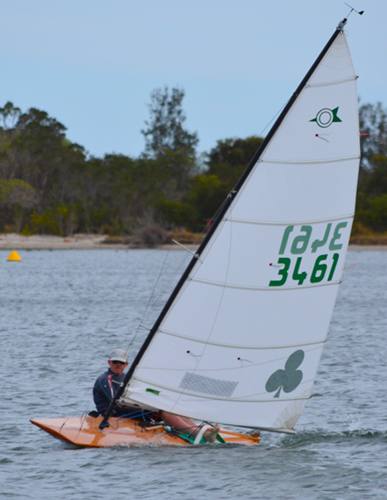
They certainly provide for exciting, close and high performance racing.
Sadly, like so many of the wooden racing dinghy classes in Australia, the number of Australian Sailfish competing at club level declined dramatically in the 1980s, and the class association folded in 1988.
Pleasingly however, there has been a wooden-boat renaissance in Australia over the past decade or so, and this has lead to a revival also of the Australian Sailfish. There have been fleets of ten to twenty Sailfish participating at wooden-boat regattas over the past few Australian summers. There have been new builds, plans have been distributed worldwide, and there have been three Australian Sailfish built in the past year in the USA in Florida, Wisconsin, and San Francisco. This revival has been promoted and reflected by an Australian Sailfish website, of which I am a co-administrator. Jack Carroll remains well and active at 90 years of age, and was in fact awarded with an Order of Australia in June this year for services to sailing.
In June this year, I was fortunate to attend the WoodenBoat Show at Mystic Seaport, something I’ve wanted to do for many years. While there, I visited the museum’s small-boat collection. I was on a mission. Just inside the entrance was the Alcort Sunfish, racked up with its stablemate, the Laser. I went exploring further, and, to my delight, I found the Alcort Sailfish tucked away in a back corner of the collection. It was a thrill.
Several days later, by chance, I was able to hire a Sunfish on the beach at Chatham on Cape Cod, and sail it on the waters of Nantucket Sound. That was a great thrill!
I hope that this information might be of some interest to you. Thank you for your wonderful magazine.
Would anyone like to buy an early model of the Super Sailfish that is in great shape?
Yes!
In the late ’50s and early ’60s we would sail with a neighbor on his Sunfish in Lake Michigan. Usually, sailing was a lot of fun, except for the day when small-craft warnings were posted, and we capsized, breaking the aluminum mast against the sand.
Great article.
I had a Sailfish and sailed Lake Ontario and some northern Ontario lakes with it from 1975 to 1991. It was faster and more athletic to sail than the Sunfish that we also had. I wish they were still available.
We rented a Sunfish 1966 and sailed it on Lake Simcoe near Big Bay Point. I convinced our family to buy one the next year. Sailed it at our rented cottage on Lake Simcoe and Lake Ontario from the Silver Birch Boathouse in east-end Toronto beaches for the next 9 years. Then was invited to race International 14 and Thunderbird yachts because of my Sunfish experience. Now I’m back in Sunfish racing in Canandaigua Lake and Rochester. Love going out in my Sunfish when the wind is too much for other boats.
A couple of answers.
1. For a replacement Minifish daggerboard I’d watch eBay for a “Barrington” board. If the desire is to make new handles, cut some 3/4″-square cleats and screw them to the top of the new, longer daggerboard.
2. The hole up by the bow handle was for a drain plug.
My first boat was a Masonite Sailfish (1974). The drain plug was in the transom, and it had wooden spars, grab rails, mast step, etc., and an old cotton sail. I varnished all the wood, and painted her international orange with a white cockpit – don’t laugh, it looked great with the varnished accents! The first time I capsized her, I was petrified, but then my feet hit the bottom! Shallow water! One time she just refused to tack, and when I got her home, found out that the stern drain plug had not been screwed in, and she weighed about 500 pounds. Many other newbie stories with that boat. Great fun always.
If you guys wanted to go back in time, my grandfather co-invented the Sunfish.
Here is a poem I wrote about it:
Sunfish
A Maple leaf floated on the lake
Momentum pushed it into a breeze
Cortlandt watched it slowly drift by, tacking south
The wheels in his head started turning
Shorter, he thought, if the boat is shorter, it will turn more sharply
It will be an easier boat for play
In time, it was, and they were sold worldwide
But for now, Bud tried to manipulate a sheet of paper into an airplane
He wanted to see if he could hit the leaf
Nailed it
Murray Dunlap
“Next to a brain injury, the devil is a clawless kitten.”